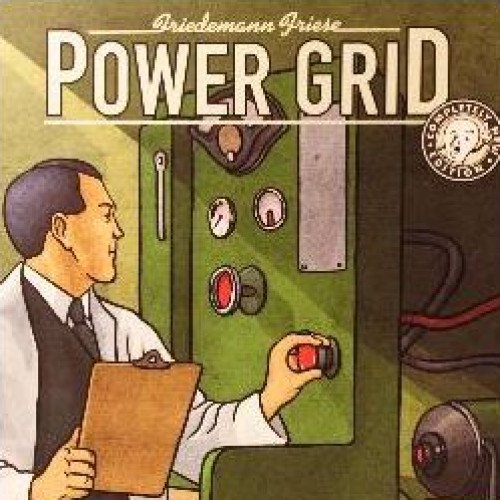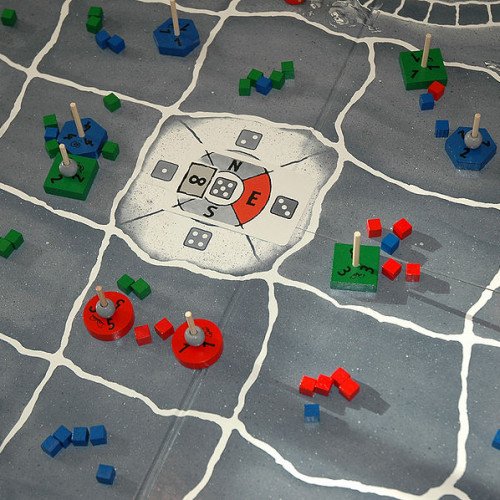"POWER GRID" vs "PRIMORDIAL SOUP"

POWER GRID
Power Grid is the English-language edition of the multiplayer German-style board game Funkenschlag (in its second incarnation) designed by Friedemann Friese and first published in 2004. Power Grid is published by Rio Grande Games. In the game, each player represents a company that owns power plants and tries to supply electricity to cities. Over the course of the game, the players will bid on power plants and buy resources to produce electricity to provide power to the growing number of cities in their expanding network. Power Grid was developed from the original game Funkenschlag, which had players draw their networks using crayons instead of playing on a fixed map. This feature (along with other changes) was removed when Friedemann Friese reworked the game. The new game is also called Funkenschlag in the German market, but is sold under various names elsewhere. The game comes with a double-sided board with a map of the United States of America on one side and Germany on the other. Each map consists of six regions featuring cities with connections of varying costs between them. The number of regions used is based on the number of players. Map design itself is a key feature in the strategy of game play as some areas of the map feature generally higher connection costs compared to other areas of the map.
Statistics for this Xoptio

PRIMORDIAL SOUP
Primordial Soup is a board game designed by Doris Matthäus & Frank Nestel and published by Z-Man Games. It was first published in 1997 in Germany by Doris & Frank under the name Ursuppe and this original version won 2nd prize in the 1998 Deutscher Spiele Preis. Each player guides a species of primitive amoeba drifting through the primordial soup. The player controls whether and how their amoebas move, eat and procreate using the 10 biological points which s/he receives each turn. A player may evolve their species by buying gene cards, which give the amoebas abilities such as faster movement. The abilities are pictured on the gene cards, showing amoebas growing fins, tentacles, spines, etc. A key feature of the game is its self-balancing ecosystem. The food required by each amoeba is a mixture of the excrement of the other players' species. Food may become scarce and cause amoebas to starve, die and decompose into food. If one species becomes scarce, this will then cause problems for the other players, since their amoebas depend on all the other species to supply their food. Genes may mitigate this, for example by turning a species into a predator. However, this still requires some healthy prey to be available. Furthermore, the other players may react by turning their amoebas into predators themselves, growing spines for defense, or simply increase their procreation rate to offset the losses. The success of each strategy highly depends on the other players' actions as each species evolves to fill ecological niches.